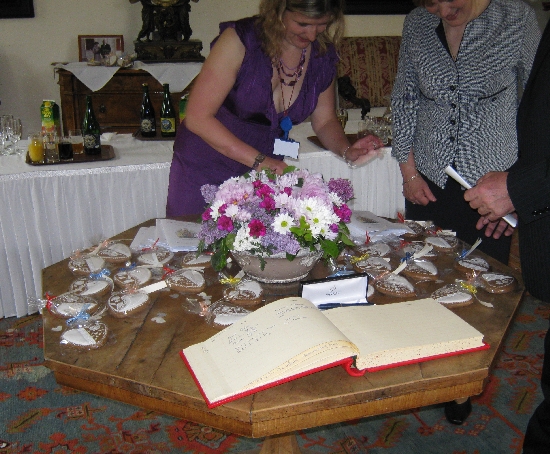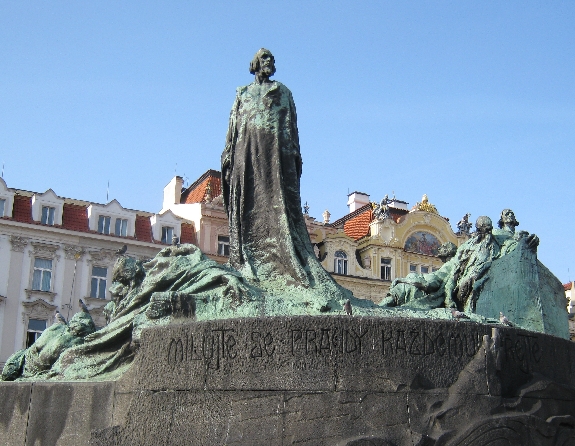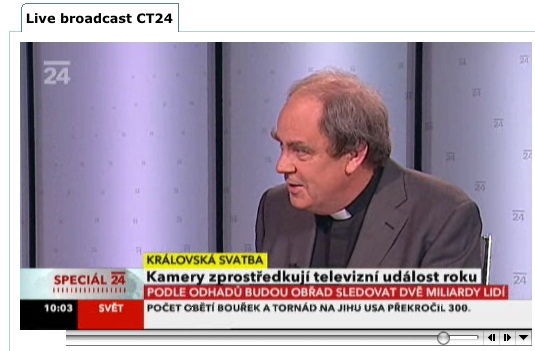
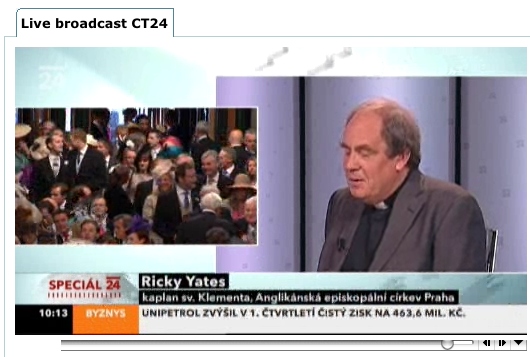
One of the things I have begun to learn as part of being the Anglican Chaplain in Prague is to expect the unexpected. So when on the afternoon of the Wednesday of Holy Week, whilst walking along Jugoslávských partyzánu, my mobile phone rang with a call from a number unknown to me, I answered it with my friendly “Ricky Yates speaking”, unsure what the response would be.
“This is Czech TV”, said a female voice in English. “We would like you to take part in our special programme next Friday covering the Royal Wedding”. Therefore, following an email exchange with Veronika Linková of channel ct24, yesterday morning at 08.30, a taxi arrived outside the Chaplaincy flat, to whisk me away to the studios of Czech TV in the southern suburbs of Prague.
Upon arrival, it was first into the ‘make-up room’ to make sure my face looked its best under the glare of the lights. Then it was downstairs to the lounge where I was able to avail myself of several glasses of water to lubricate an increasingly dry throat. Here I met Martin who was to translate for me. I was also able to see and hear the live broadcast coming from the neighbouring studio.
Next it was the technician who ‘wired me for sound’ with a clip on microphone on my lapel and the battery pack clipped to my back trouser pocket. I was also fitted with an ear piece through which I would hear what I was being asked in Czech, translated into English. Then finally came the call to go into the studio to be interviewed live on Czech TV.
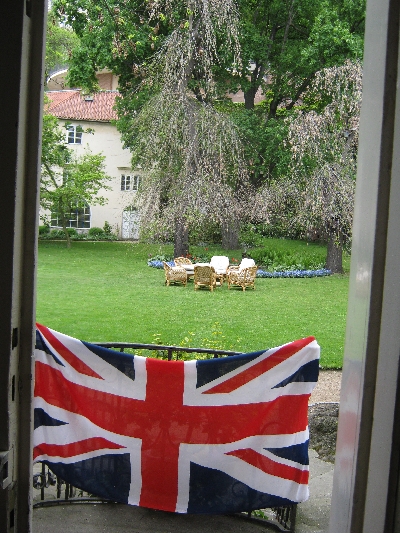
I had been told in advance that I would be asked about the Anglican Church and the Marriage Service but I had no forewarning as to what the exact questions would be. Some were what I expected such as the relationship between the Royal Family and the Church of England and what impact I thought the televised wedding would have on people’s attitude to the Church.
As the Roman Catholic Church is the majority Church in the Czech Republic, I was also expecting a question regarding differences between an Anglican and a Roman Catholic ceremony. But what I wasn’t expecting was the surprise expressed by one of the two joint presenters Hana Scharffová, that a wedding should take place on a Friday because she claimed, that would never be allowed in the Roman Catholic Church as Fridays are meant to be days of abstinence.
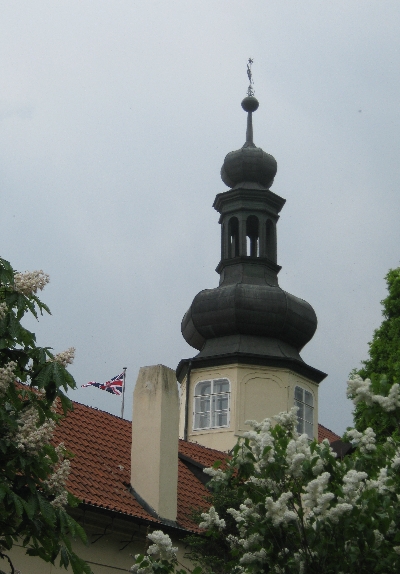
The question I certainly wasn’t expecting came from the other joint presenter Tomáš Šponar. He asked me about the level of support for the Royal Family within the Anglican Church in view of the outburst by Bishop Pete Broadbent on Facebook at the time of the announcement of the Royal engagement in November 2010. This was one piece of news that I didn’t realise had trickled down to the studios of Czech TV!
Unfortunately during the first part of my interview, the English translation into my ear piece was intermittent due to a loose connection somewhere. Fortunately, a combination of my limited understanding of Czech and both presenters occasionally re-phrasing their questions in English, allowed me to answer reasonably successfully. During a brief break, the technician who had wired me up, came back into the studio and sorted out the problem.
My questioning over, courtesy of Czech TV, I travelled back once more by taxi, but only as far as Mala Strana. There I was meeting up with Sybille as we had previously accepted an invitation to an event to celebrate the Royal Wedding that was not being televised! We were formally invited by the British Ambassador and her husband, to a Champagne Lunch at the British Embassy and more informally invited by ‘Sian and Richard’, to watch the Royal Wedding on TV beforehand. As we do not have a television ourselves, we were very pleased to have opportunity of watching it at the embassy.
The Embassy was suitably decorated to mark this special occasion as can be seen in the two accompanying photographs. As a memento of the day’s events, each guest was presented with a beautifully decorated gingerbread heart which can be seen below, laid out on a table, along with the visitors’ book.
